For larger views of any of the photos (1200 x 800) - please click on the individual images
The formula above in the title simply refers to Sound Quality + Build Quality + Perceived Value. Read on to find out why for me they became a must buy.
INTRODUCTION
I’d read a little about the Fidue A83 on these forums, but really knew nothing about the company or their IEMs. And whilst I’d looked at a couple of the reviews, and was genuinely interested, at USD 320-399, and considering I already have a set of Dunu DN-1000 and Altone200 (both also triple hybrids), I was a little reluctant to take the plunge.
Then Vic (djvkool) contacted me and generously offered to send me his pair to trial and review them. Naturally I jumped at the chance. I’d like to thank djvcool, Loquah and !joker! for their superbly written reviews and impressions – as these are what captured my interest in the first place.
Fidue Acoustics is a Chinese earphone company founded by Benny Tan (who has more than 20 years design experience – developing earphones for other global branded companies). The name Fidue is simply an acronym of the principle design points that the company strives to implement in their product range
- Fidelity
- Inspiration
- Durability
- Uniqueness
- Enjoyment.
Fidue’s product catalogue to date has included mainly dynamic driver models ranging from the sub $50 bracket, all the way to their current flagship (the A83 which I’m reviewing today) at $320-399. The A83 is the first triple hybrid IEM released by Fidue.
In the last 4 weeks I have spent countless hours assessing the Fidue A83. In that time I have also listened to my Altone200 and DN-1000 so that I can reference differences, but the A83 has taken most of my listening time – and it has been a very pleasurable experience. With this earphone, I was “wowed” from day one – and that sense of enjoyment with the A83 has not diminished at all the longer I have had them.
I started with Vic’s loaner unit, but very quickly I arranged to purchase my own unit – and once it arrived I returned Vic’s A83 with grateful thanks. I’d estimate that so far I’ve logged around 100+ hours with the Fidue A83, split roughly evenly between Vic’s model and my own brand new one. I noticed no change between the well broken in model from Vic (it was used on an Australian tour), and my brand new A83.
DISCLAIMER
I was initially provided the Fidue A83 as a loaner from dkvcool, and I have returned it after purchasing my own unit from Fidue. I am in no way affiliated with Fidue - and this review is my honest opinion of the A83.
PREAMBLE - 'ABOUT ME'. (or a base-line for interpreting my thoughts and bias)
I'm a 47 year old music lover. I don't say audiophile – I just love my music. Over the last couple of years, I have slowly changed from cheaper listening set-ups to my current set-up. I vary my listening from portable (Fiio X5, and iPhone4) to my desk-top's set-up (PC > coax > NFB-12 > LD MKIV > HP). I also use a portable set-up at work – either X5 > HP, or PC > Beyer A200p > HP. My main full sized headphones at the time of writing are the Beyer T1 and Sennheiser HD600. Most of my portable listening is done with IEMs (I do also have the Beyer T51p, but IEMs command most of my portable time) - and up till now it has mainly been with the Dunu DN-1000 and Altone200. A full list of the gear I have owned (past and present is listed in my Head-Fi profile).
I have very eclectic music tastes listening to a variety from classical/opera and jazz, to grunge and general rock. I listen to a lot of blues, jazz, folk music, classic rock, indie and alternative rock. I am particularly fond of female vocals. I tend toward cans that are relatively neutral/balanced. I am neither a bass nor treble head (you could argue that I do like clarity though). I am not treble sensitive (at all), and in the past have really enjoyed headphones like the K701, SR325i, and of course the T1 and DT880.
For the purposes of this review - I used the Fidue A83 straight from the headphone-out socket of my Fiio X5, and iPhone 4, and also from the Beyer A200p when at work. I did not further amp them, as IMO they do not benefit from additional amplification. In the time I have spent with the Fidue A83, I have noticed no change to the overall sonic presentation (I do not believe in 'night and day' burn-in). I will respect others choice if they believe in physical burn-in, but I am yet to experience it.
This is a purely subjective review - my gear, my ears, and my experience. Please take it all with a grain of salt - especially if it does not match your own experience.
THE REVIEW
PACKAGING AND ACCESSORIES
The Fidue A83 arrived in a very attractive green and black retail box which was probably a little larger than I would normally expect for an IEM. The outer retail carton has very good colouring though and is quite attractive – with my only criticism being that the gray on black text for the specifications (on the rear of the retail box) is a little hard to read.
 | [size=12.8000001907349px] [/size] [/size] |
End On - Foam Covering Over Pelican Case | Pelican Case Sandwiched Between the Foam |
Sliding open the retail box reveals a white foam inner covering – which houses the accessories (more on them shortly). Removing those reveals that the foam is in fact two pieces and fits snugly over a clear pelican case containing the Fidue A83s. Once you see this, you realize the need for a little more size with the outer packaging, but also appreciate the extra care taken to make sure these IEMs are well looked after. You could drop a bowling ball on the outer case, and although the retail box may not fare too well – I guarantee the A83 would survive quite nicely.
The pelican case opens to reveal a molded inner foam enclosure which snugly holds the A83 with the cable wound around a groove in the sides. If you’re storing the Fidue A83 in its inner case, they will be very well protected. For my personal day to day use though – I’ve been using one of the Brainwavz cases (slightly more pocket friendly).
The accessory pack is generous and includes an airline adaptor, 3.5-6.3mm adaptor, 1 set of medium foam tips, 3 sets of single flange silicone tips, and two sets of dual flange silicone tips. There is also a QA card which has the warranty information written in Mandarin.
TECHNICAL SPECIFICATIONS
(From Fidue)
| Type | Hybrid Inner Ear Monitor |
| Drivers | 10mm Dynamic + dual Balanced Armature |
| Frequency Range | 9 – 31 Khz |
| Impedance | 11 ohm |
| Sensitivity | 104 dB |
| Max Input Power | 30 mW |
| Distortion | <1% |
| Plug | 3.5mm gold plated |
| Cable | 1.3m silver plated OFC copper, removable (MMXC connector) |
| IEM Shell | Molded hard plastic with alloy faceplate |
| Total Weight | 23g (A83 including cable) |
FREQUENCY GRAPH

The above frequency graph was supplied by Fidue – and my thanks to user jopok901 for initially posting it.
EDIT : Added graph from Veritas. Please note this is raw data with no compensation - but it is very similar to the same raw data shown on Innerfidelity. For those wondering, the dip at 4kHz doesn't translate as a cavernous hole in the frequency - and even now two years after first reviewing the A83, I still think it is a great sounding IEM.

BUILD QUALITY
The Fidue A83 has a molded shell designed to be worn with the cable over the ear, and the body of the A83 sitting inside the outer ear – similar to a Shure or Westone type design. When I’m wearing mine, the shell sits relatively flat against my concha with the nozzle protruding on an angle into the ear. As stated in the specifications, the shell is a molded plastic (right is red, left is blue) which is very smooth and seamless, with a very attractive metallic alloy faceplate. The A83 is approx. 21mm long and 15mm deep at its widest point. It is approx. 10mm from the faceplate to the base of the nozzle, and the nozzle itself extends approx. 7mm from base to tip. The nozzle has a generous lip, and tips are held very securely. There is a single port or vent adjacent to the base of each nozzle.
The cable is connected to the A83 housing using MMXC type connectors. Fidue’s cable actually has an additional slot for added stability (it also stops it excessively rotating) – however this slot is not necessary to make a connection – so any compatible MMXC connecting cable should also fit.
The cable is (in my humble opinion) one of the best built cables I have ever seen, and a real thing of beauty! From the MMXC connectors, there is a 7 cm length of memory wire which is both soft and extremely pliable, yet still holds its shape. Above the Y split, the cable is a twisted pair encased in a soft yet durable clear sheath.
Update 19 Sept - I should have listed this a while ago - my original pair developed a connector fault about a month after posting the review (one ear piece had audio cutting out). I contacted Michael and arranged a replacement pair. Fidue's service was impeccable as always. Unfortunately the replacement pair developed virtually the same fault. It is the MMCX connector, and it seems to be a relatively common fault. I know Fidue has tried a few times to fix this over the last 12 months. I still use the A83 - but now with a Shure cable, and have had no issues since. I've modified the review score accordingly. Something to be aware of.
Below the Y split – the cable is encased in a grey sheath and beautifully braided until it reaches the 3.5mm plug. The Y split is minimal, stylish and has extremely good strain relief. The plug itself is straight, slim, and again is both stylish and has very good strain relief. The entire cable is extremely sturdy, quite flexible, and is not prone to tangling. Microphonics are minimal (worn correctly over ear) unless it comes into contact with textured (ribbed) clothing, or a zip – and then the contour of the cable can create quite a bit of noise against the contours of clothing. However – I had no issues with walking – having the A83 cable tucked inside my shirt – and I really doubt many people would be using these for strenuous exercise. They just aren’t ‘that sort of IEM”.
The one missing thing is either a shirt clip, or neck cinch – however the need for this is minimized due to the build of the cable tending to hang naturally anyway.
Overall the build quality is very good - apart from potential cable connector issues.
FIT / COMFORT / ISOLATION
I have one ear canal slightly different to the other one (my right is very slightly smaller) - so I tend to find that usually single silicon flanges don't fit overly well. I initially tried the included large silicone tips, and whilst they fit OK, I was unable to maintain a seal. The dual flange tips were similar but for my ears, again could not maintain a seal, and weren’t as comfortable as I’d prefer. I tried their included foam tips, and they fit me well and were comfortable. I’ve also used the blue foam tips from my Altone200s – but lately have settled for Comply T400s which seal reasonably well for me and, are very comfortable.
The fit can be a little tricky at first until you find the right tips for your own ears – but with the T400s it takes no time at all for me to get a perfect seal every time.
Isolation with the T400s fitted is average (nowhere near Shure’s almost perfect isolation – but quite effective), and they're not bad for long distance air travel (you still get engine noise, but it's drowned out by the music ). Because of their flat profile (when worn they do not extend past the ear), I have had no issues at all relaxing or sleeping with the Fidue A83. They would rank up there as one of the more comfortable IEMs I’ve worn – especially with the T400s.
There can be slight driver flex on initial insertion – but this is minimal. I experienced this with both Vic’s pair, and also my own.
So what does the Fidue A83 sound like, and why did I arrange to purchase my own pair within 48 hours of trying them for the first time ?
SOUND QUALITY
The following is what I hear from the Fidue A83. YMMV – and probably will – as my tastes are likely different to yours (read the preamble I gave earlier for a baseline). Most of the testing at this point (unless otherwise stated) was done with my Fiio X5 as source.
Tracks used were across a variety of genres – and can be viewed in this list http://www.head-fi.org/a/brookos-test-tracks.
Thoughts on General Signature
If I was to describe the signature in one word – I’d chose the word “natural”.
I’m finding the Fidue A83 to be very balanced across the audio spectrum with nicely extended bass, a very slight mid-bass rise, full and rich lower and upper mids, and a slightly brighter than strictly neutral lower treble (but not excessive for my taste) - with good extension into the upper treble. This combination gives an extremely clear and articulate sound with very good bass slam that shows up when it’s needed, but remains firmly in the background when not required. I'm also finding a very natural true to life signature with good timbre, and in a lot of ways it reminds me of across between my HD600 and the DT880 I used to have (probably closer to the HD600 overall).
Overall Detail / Clarity
For this I always use both Steely Dan’s “Gaucho” and Dire Strait’s “Sultans of Swing” as there is a lot of micro detail in both tracks, and the recording quality for both is excellent.
The Fidue A83’s detail retrieval is excellent, and to me it sounds extremely similar to my HD600. With Gaucho, the sax intro is natural sounding and smooth. For me there is no hint of peakiness or glare. Cymbals in this track usually sit delicately behind the vocals and other instruments, and the A83 delivers perfectly. Everything sits exactly where it should be. What I love about listening to this track with the A83 (in contrast to my other more V shaped hybrids) is the balance and cohesion between both vocals and main instruments.
Switching to Sultans of Swing, and once more the overall balance of the A83 is just stunning. The bass is tight and fast – but not over-emphasized. Vocals are clear – but more importantly sound natural – and far better than the Altone200 delivers with male vocals. Knopfler’s guitar is allowed to contrast nicely with his vocals, and the overall coherency of the track is wonderful. Detail is all there – the subtle hits of snare and cymbal – and while it may not be as vivid as the Altone200’s more V shaped sound – the combination of raw detail and perfect tone (for my tastes) just resonates. Separation of every instrument is excellent, and there is no evidence of smearing on any track I’ve listened to so far.
Sound-stage & Imaging
For this I use Amber Rubarth’s binaural recording “Tundra”. I use this because it’s a pretty simple way to get comparative data on sound-stage.
It’s usually difficult to get a reasonable stage size from an inner ear monitor. The stage is often quite small / close – with an average impression of space. The Fidue A83 does give more of a sense of space than most typical IEMs, showing very good width with this track. Depth and height are just average though – but that’s OK as it is extremely difficult to achieve good depth with any IEM In my experience. It does sit on par with the overall staging of Dunu’s DN-1000 though. Directional cues are very good – so I have no problem overall with imaging.
I also used Loreena McKennitt’s “Dante’s Prayer” and the Fidue A83 gave an extremely captivating performance. Once again the tonality of this IEM is just incredibly natural – and whilst the sense of space is more intimate than spacious, it still delivers very good imaging within the intimate stage it sets. In this track, the applause at the end is so well presented that with some headphones (HD600) I can actually close my eyes and imagine myself in the crowd. With the Fidue A83, the applause does not quite take me into the audience – but this does not detract from the thorough enjoyment I got from the track overall.
Bass Quality
With most triple hybrids I’ve heard, you generally expect a V shaped tuning with the dynamic delivering copious amounts of bass, and often a contrast with very clear upper mid-range emphasis for vocals and stringed instruments. The Fidue A83 shatters this mold by displaying a really balanced overall frequency response. The bass is definitely there, and can hit hard when called for – but it’s balanced with the rest of the track, generally well defined, and more importantly conveys a natural mix of speed, definition, power and timbre. The best part of it, is that there is no bleed, and the slightly less emphasis (to its other triple hybrid cousins) has allowed Fidue to tune a balance into the lower mids which conveys realism (especially with male vocals).
Listening to Zoe Keating’s “Escape Artist” (Zoe plays Cello – and has a Bandcamp site – definitely worth looking her up!), and the cello’s depth and timbre is rendered incredibly beautifully with life-like decay. It’s very easy to get lost in the music with this sort of realism.
Switching to something with bigger sub-bass impact like Lorde’s “Royals” or Amy Winehouse’s “You Know I’m No Good” and the impact goes up markedly – but this is precisely what it should be doing as it’s the way both tracks were recorded.
Change to Seether’s version of “Immortality” and the impact of both drums and bass guitar slides back a notch – still there but leaving vocals, guitars and other instruments to shine. The key here is balance – and the Fidue A83 just keeps delivering – exactly what the track contains – no more, no less.
Female Vocals – A Special Note
I had to add this section simply because around 60-65% of my music revolves around female vocals – be it jazz, pop, rock, electronic, or even opera. I’m an unabashed fan. For me the most captivating thing about the Altone200 I reviewed previously was how it rendered female vocals. Other IEMs I’ve owned in the past had sometimes struggled with some of the artists I like – and this includes IEM’s like Shure’s SE535 LE (upper-mids on the SE535 LE are quite forward). The Altone200 just nailed everything though – often bringing an almost euphoric quality to the overall presentation.
With its superior balance I was concerned that the A83 might lose a little of that euphoria with female vocals – and to be fair, it did a little. But what it brought to the table instead was a greater sense of realism. Artists like Agnes Obel had no signs of the shoutiness which can sometimes appear with other IEMs and the contrast between vocals and instruments (the cello contrasting with Agnes voice for example) brought its own magic. I then proceeded to play a medley of different tracks from artists including Christina Perri, Gabriella Cilmi, Norah Jones, and even Dolores O’Riordan – and each time I was stunned by what I was hearing. The presentation is definitely different than the Altones – and there will be times when I’ll prefer their special colour. But if I had a choice of only one IEM to listen to all of my female artists from this point on, I’d be going with the Fidue A83. For my preferences – the natural presentation trumps the coloured one.
Genre Specific Notes
Again for tracks, albums, artists – please refer to this list: http://www.head-fi.org/a/brookos-test-tracks
Rock – The Fidue A83 nail this genre for me – and although on some tracks the bass is not as strong as either the DN-1000 or Altone200, it’s there when called for, and it’s the overall cohesion of many of the tracks I tried which has won me over. 3 Doors Down “Away From the Sun”, and Alter Bridge’s “Broken Wings” are both captivating – more so because the Fidue accurately portrays the timbre of the vocals – especially Miles Kennedy’s special timbre. If anything they may be slightly brighter than strictly natural – but it’s only slight – and for my preferences it still sounds perfect. I’m not getting any signs of fatigue. Switching to the much faster paced “Diary of Jayne”, and the drivers are keeping up quite nicely without the confused “wall of sound” presentation you sometimes get with less capable drivers.
Alt Rock – First up (in my usual test rotation) was Pink Floyd’s “Money”, and The A83 once gain delivers nicely. Everything in the track appears to be presented – although I’m noticing some of the more accentuated detail of cymbals and bells portrayed by the Altone200 or DN1000 sit a little further back with the A83. Everything is still very clear though, and the Fidue A83 is easily handling the complex changes of contrast. Switching to Porcupine Tree’s “Trains”, and once again – perfection for my tastes. Before I’d noticed it, I’d listened to half the album, and had to try and remember that I was supposed to be writing a review. The bass line for Trains is rendered extremely well – definition and contrast of the dynamic bass with the smooth and flowing vocals is just so enjoyable.
Jazz / Blues / Bluegrass – Portico Quartet’s “Ruins” is always a first stop for me when testing a new IEM with Jazz, and the A83 impresses once again. The sax is smooth and soulful, cymbals crisp and engaging, percussion tight and snappy, and the double bass deep and textured. Once again everything gels – and once again I’m on off on a sidetrack to load another song from the album (the song “sleepless”) because I just have to find out how the A83 handles Cornelia’s vocals (the track is sublime by the way). I need to tear myself away though and get back to the review – so time to queue up Mr Davis. The track is “So What” from the album Kind of Blue, and once again I’m stuck by how much the A83 sounds like the HD600 – and it really does just have a stunningly good tonality with everything I’m listening to. Again the A83 is crystal clear, and has the ability to showcase the overall contrast (double bass, brass, cymbals and percussion), whilst remaining coherent, smooth and utterly entrancing.
Next up was Blues – so I alternated between Joe Bonamassa’s India-Mountain Time, and Mark Lanegan’s “Bleeding Muddy Water”. Two contrasting tracks – both fantastic with the A83. Joe’s guitar work and vocals are portrayed brilliantly with plenty of crunch and liveliness. And when switching to Mark’s brooding bassy blues-rock, the texture of his voice with the thump of the bass line – magic. Reminder to self – I need to go back to both albums and listen to them in their entirety!
Rap / EDM / Pop – Eminem’s “Lose Yourself” is stunning with Fidue A83s – and one of the biggest differences with the Altone200 is that although the Altone has more sub bass, the A83’s do better with Marshall’s vocals. Time for a little Florence and the Machine, so onto “Howl” – and although here both the Altone2100 and DN1000 might portray this track more vividly – the A83 still handles the track very well, and I think I prefer Florence’s vocals with the A83 as they are simply more realistic. On to some EDM – and Lindsay Stirling’s “Electric Daisy Violin” definitely thumps – but what impresses me more is the projection of the violin – perfectly clear, smooth, and haunting. Little Dragon’s “Little Man” was equally as impressive, but it was with The Flashbulb that I was once again lost – and dangerously close to losing another few hours just listening to my music again (review forgotten). The tonality, the contrast, the depth of sound – all truly sublime.
Classical / Opera – By now I’m already accepting that the Fidue A83 are genre masters, so I was expecting more of the same with my classical and operatic albums. Kempff’s Moonlight Sonata was as captivating as always, but it was with the multi instrumental pieces (Netrebko and Garanca portrayal of Lakme’s Flower Duet, and Julia Fischer’s rendition of Tchaikovsky’s Violoin Concerto in D) where once again the magic, the pure captivation of the Fidue A83 shone yet again. In particular the performance of Netrebko and Garanca was enchanting – and this particular piece still gives me goose-bumps when I listen to it.
AMPLIFICATION REQUIREMENTS
The Fidue A83 is easily powered straight out of the portable devices I have, and I haven’t experience any issues with the 2 DAPs I’ve tested (iPhone 4, or Fiio X5), nor from my A200p (at work). With typical pop/rock songs on the X5 I’m usually at a volume level of 25-30 (so less than 25%) and that’s on low gain. So far I’ve had no issues with hiss on the X5 or iPhone4.
RESPONSE TO EQ?
So far I haven’t used EQ – at all – with the A83. For me, they don’t need it – they are already beautifully natural in tone. But for the sake of the exercise I loaded Accudio Pro on my iPhone, set the preset for HD600, listened, then applied an AKG701 filter over the top, and repeated the process switching instead to an LCD-2 filter. In both cases, the A83 responded well to the EQ (no noticeable clipping or distortion), but for my personal taste it was a case of applying a colouration to an IEM that simply needs no additional colouration.
QUICK COMPARISON OTHER HYBRID IEMs – Fidue A83 vs T-Peos Altone200 and DN-1000
For this exercise I’ll try and give you a rough general comparison with two other Hybrid IEMs which I have on hand, and which range in value from around USD 150 – 200 (the Fidue A83 is considerably more expensive). Rather than referencing particular tracks – I’m trying to make this general. I’ve volume matched as closely as possible when performing the comparisons (using test tones and an SPL meter) – but it is relatively difficult to do this without a perfect set-up, and I fear that the results may not be entirely accurate. So as always – take the following with a large grain of salt. Remember these are my preferences only.
Vs Altone200
The Fidue A83 has a more balanced frequency response overall. The Altone200 is more V shaped with deeper sub-bass and more emphasis on upper mid-range and lower treble, so appears slightly hotter/brighter, and maybe has slightly more perceived clarity. The Altone can shine particularly with female vocals, giving them an almost euphoric colouration at time – but this is at a cost to slightly less lower mid-range emphasis which can detract from male vocals. The Fidue A83 handles all vocals beautifully, being both more neutral and more natural sounding – with a fuller and more cohesive mid-range overall.
Vs Dunu DN-1000
This one is really interesting as both are a little more balanced through the mid-range, but again where the DN-1000 has a pronounced V shape, the Fidue A83 is more balanced, and overall more cohesive. The DN-1000 has a slightly hotter lower treble and a little more stridency – where the Fidue A83 is definitely smoother.
FIDUE A83 - SUMMARY
This review has taken me longer to write than any other review I’ve written (almost 4 weeks) – and the reason for this is testament to how well I regard the Fidue A83. I’ve often sat down to start writing something and simply become lost in the music along the way – review forgotten.
Before getting the chance to listen to the A83, I had been perfectly happy switching between my DN-1000 and Altone200. They are both fantastic IEMs, representing wonderful value and great sonics – and were the reason I’d become a “hybrid IEM junkie”. But I fell in love with the Fidue A83’s presentation from virtually day one – and despite the steeper price, I ordered my own pair within 48 hours of trying them. If I was forced to only have one pair of IEMs – the Fidue A833 would now be “my keepers”.
The Fidue A83 is an exquisitely built and stylish IEM with a beautifully balanced and naturally coherent sound signature. It has excellent bass speed, texture, definition and impact. The mid-range is full – both upper and lower-mids – and once again shows marvelous tonality and timbre. The treble has very good extension and clarity. I personally find it quite smooth – but acknowledge that it is brighter than many would consider being completely flat. The A83 has less treble than either the DN-1000 or Altone200.
IMO the Fidue A83 sounds tonally very similar to my HD600 – and that alone for me makes it an incredible sounding earphone. Due to its size, and shape, the fit for me is extremely comfortable.
My litmus question is always “would I buy these for myself”, and “would I recommend them to my family”. The answer to this question is glaringly obvious – because I have bought a pair and have no regrets. I’ve even gone as far on the forums as suggesting that the A83 may be end game for me as far as IEM’s go. Over the last 4 weeks they have frequently immersed me in the music so much that I have literally forgotten what I originally set out to achieve. And they do this with no listening fatigue (YMMV).
I’ve given these IEMs a rating of 4 stars, and sonically they deserve this (I’d rate them higher if I could - but the cable issue isn't one to be overlooked). I’ve listed purchase price at USD 300.00 (I paid a little less than this – but I cannot disclose the amount – it was a bargain, but not significantly less). The lowest I’ve seen them so far has been around the $270 mark (promotions). Even at $350-399 to me they would still be worth it, and I would have purchased at the higher price.
RECOMMENDATIONS TO FIDUE
Fix the cable, and maybe add a chin slider. But don’t change the sonics. These are perfect.
And thank you for the privilege of being able to own these excellent earphones.













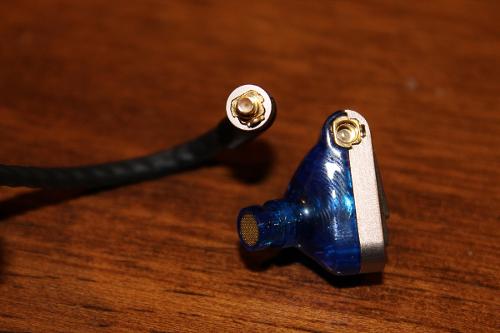
















































































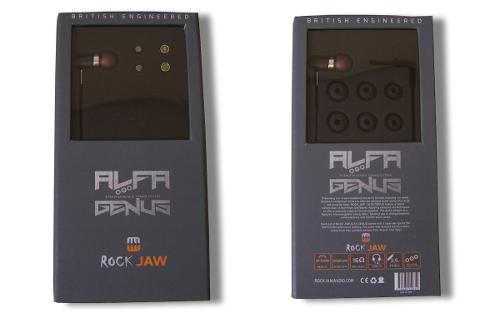



















































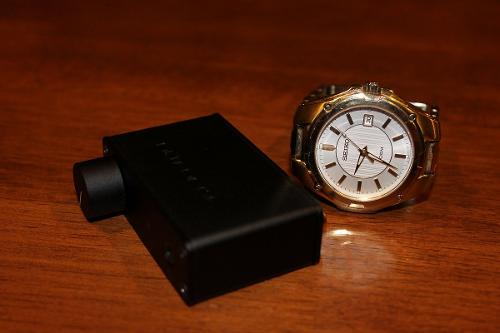






































































































































































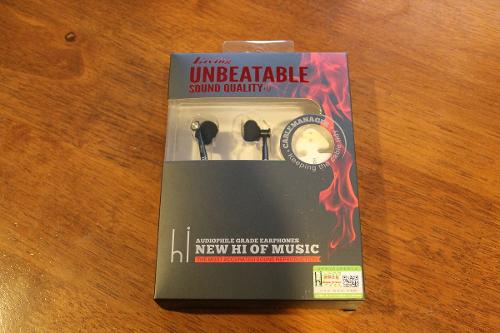

















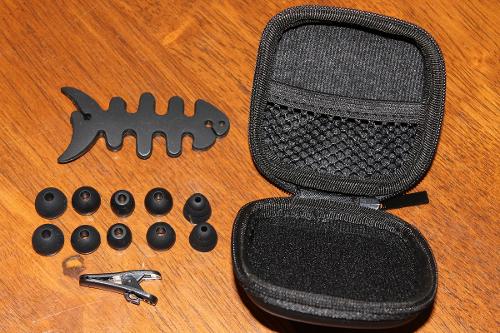








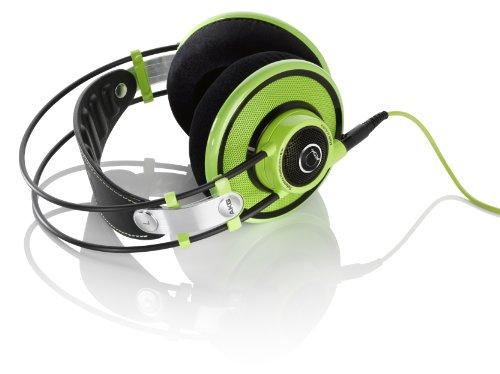










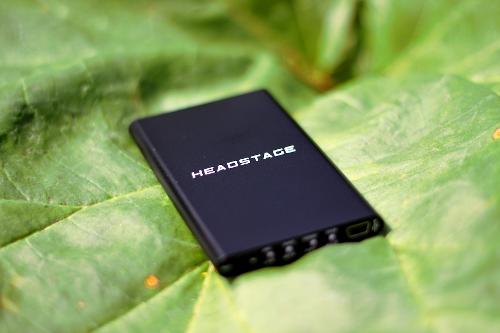



































I had a quick question about these...they really pique my interest. I've seen lots of good reviews, but I hesitate because of the HUGE 4K dip I saw reflected in Tyll's measurements (http://www.innerfidelity.com/images/FidueA83.pdf) I don't think I've heard anyone mention it (although Tyll posted the measurements w/o comment) but it gives me pause... From your review, I'm guessing you didn't hear any such anomaly...did you get to measure these?
Thanks again for all the reviews.